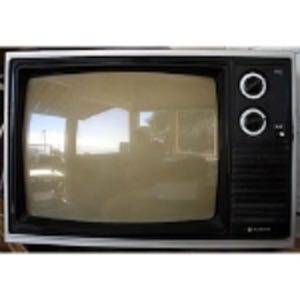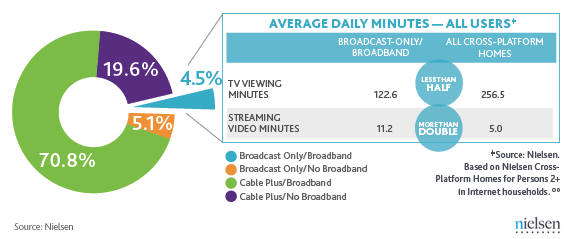The disruption of cable television at the hands of the Internet and its premium video streaming services has been predicted for some time now. Perhaps there’s something about the size and demeanor of the cable industry that makes some people long for it to be conquered by the free and open Web. Maybe that skews the imminence of the predictions. Either way, to many, cable’s disruption just feels inevitable.

Cable is indeed losing subscribers, but it’s happening very slowly. According to the latest data from Nielsen, the number of U.S. homes with cable subscriptions has declined 4.1% in the last year. Meanwhile, TV service provided by telephone companies like Verizon increased 21.1%.
So, it’s not that traditional, non-Web television service in general is going down. Cable subscription rates are dropping slowly, while satellite and other pay TV services are on the rise. Web TV may not be exploding in the way that many might have expected, but it is on the rise.
Nielsen reports considerable growth in the sector of consumers who watch a combination of Web-based and non-cable broadcast television. This is the crowd that Boxee hopes to target with its live TV antennae dongle. They watch half as much TV and stream twice as much online video as the general population.

It’s a group that has grown quickly, but still makes up only 5% of consumers. By comparison, nearly 71% of households subscribe to both broadband and cable television. Cable’s penetration rate alone is more than 90%. In short, it’s not going away anytime soon.
The cable industry faces real, longer-term threats from the likes of Netflix, Hulu and increasingly, Amazon Prime, as well as from set-top boxes and connected TVs. Trends in technology, coupled with the high prices of cable subscriptions, are slowly making cable less attractive to consumers Realizing this, the cable companies have put a renewed focused on innovating for a hyper-connected, multi-screened future.
TV content – wherever it may originate – still takes up an extraordinary amount of our lives. On average, Americans watch 33 hours of television per week. Television has long dominated the media diets of consumers, but what’s changing is when and how they access it.










